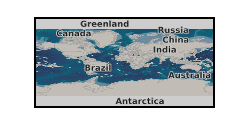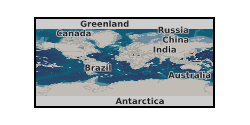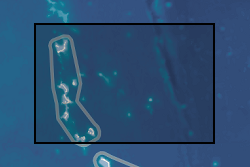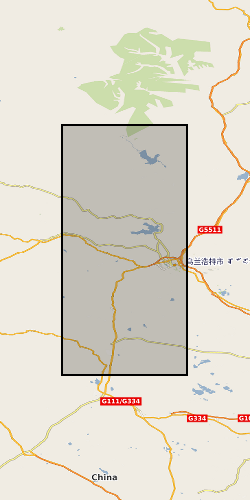Excel (xlsx)
Type of resources
Topics
Keywords
Contact for the resource
Provided by
Years
Formats
Representation types
Update frequencies
-

Major and trace element composition, and stable isotope data for whole-rock samples from alkaline rocks of the Chilwa Province. Samples collected between 2011-2021 in the Chilwa Alkaline Province, Malawi
-

EPMA (Electron probe microanalysis) major element analyses of clinopyroxene, olivine, amphibole and glass from lava and tephra samples of the 2021 Tajogaite eruption. LAICPMS (Laser Ablation Inductively Coupled Plasma Mass Spectrometry) trace element analyses of selected clinopyroxene from the eruption sequence.
-

High-precision CA-ID-TIMS (Chemical Abrasion Isotope Dilution Thermal Ionization Mass Spectrometry) Uranium-Lead geochronology of zircon, extracted from igneous plutonic and mineralised porphyry intrusions in the Rio Blanco-Los Bronces Cu Porphyry area, Chile. Eleven parent samples cover an age range of ca. 14 Ma to ca. 5 Ma. Sample Identifiers correspond to the NERC Highlight topic consortium project FAMOS (From Arc Magmas to Ores) samples from the Natural History Museum component of the project and Large et al.(2024) J. Pet, where full rock types, geo-references, petrography, and geochemistry of parent samples can be found in addition to zircon Cathodoluminesence and SEM characterization of zircon of samples, and the corresponding zircon trace element analyses (inclusive of U-Pb) by laser ablation ICPMS. This data provides insights into the crystallisation of zircon and timescales of porphyry copper deposits.
-

The dataset includes results from laboratory experiments aiming to explore the reduction and polymerization potential of phosphorus under metamorphic conditions. Table 1 shows the initial composition of the starting materials, as well as the conditions under which those materials were heated to metamorphic temperatures. Table 2 shows the analytical results, including mineralogy and phosphorus speciation. The results show that phosphate polymerization occurs at moderate temperatures of a <100 to ca. 300 degrees whereas phosphate reduction increases with increasing temperature. The presence of metallic catalysts impacts both processes. The results imply that a diverse suite of phosphorus species can be created during metamorphism, which may explain previous reports of reduced phosphorus in high-grade metamorphic rocks. This is relevant for the origin of life, where such species may have been important precursors for phosphorylated biomolecules.
-

3484 Cenozoic fossil fungi records from published data. Files are: MyCeno_records.csv = records of fossil fungi; MyCeno_citations.csv = citations for fossil fungi record sources. (‘Citation_IDs’ are linked to ‘Source_of_record_IDs’ and ‘Supporting_literature_IDs’ in the records table); Myceno_column_info.csv = information about columns in the records table.
-

Marine sediment core sediment and pore water fraction barium concentration and isotope data with associated error collected during the International Ocean Discovery Programme (IODP) expedition 391 at Walvis Ridge, offshore Namibia, collected November 2021 - February 2022. Latitude and Longitude of each specific sample is listed in the datafile. Samples were measured on the Thermal Ionising Mass Spectrometer at the University of Oxford and have been drift corrected between 1st January 2023 and 30th September 2024. They are the final, complete record of the data. The data has an external error of 0.03 per mil and is deemed reproducible. Ethan Petrou is responsible for collection and processing of the data and can be contacted. The data was collected to increase the number of barium isotope measurements in the modern oceans and would be useful for any modern oceanography or geochemist interested in redox or paleoproductivity.
-

Rhenium-osmium abundance and isotope data obtained for the Nakatengu Creek Section, Japan. Sample collection August 2021 principally funded by NSF-NERC award. The approximately 2000 m stratigraphically thick Cretaceous section mainly comprises organic bearing siltstone, siliceous mudstone, sandstone and interbedded tuff horizons.
-
Method validation of IC-ICPMS with chlorine removal for phosphite analysis (NERC Grant NE/V010824/1)

Method development for trace-level analyses of phosphite in chloride-rich matrices. Dataset includes linearity data from the ion chromatograph (IC) in stand-alone mode and coupled to the inductively-coupled plasma mass spectrometer (ICP-MS), with and without removing chloride from the solution, as well as nuclear magnetic resonance (NMR) data for phosphorus species. The results demonstrate successful removal of the chloride matrix for analyses of phosphite in solutions at sub-ppb concentrations. Additional details about the methodology are published in Baidya, A.S. and Stüeken, E.E., 2024, Rapid Communications in Mass Spectrometry, 38(1), p.e9665.
-

Measurements of nitrogen and carbon abundances and isotopic ratios for deep-marine ferromanganese crusts and nodules from the modern ocean. This reservoir has not previously investigated as an archive of nitrogen isotopes. The results reveal unusually negative values, interpreted as evidence of partial ammonium oxidation succeeded by adsorption of nitrogen oxides to the mineral surface. More details can be found in Stüeken , E E & Bau , M 2023 , Geochemical Perspectives Letters , vol. 25 , pp. 13-17 . https://doi.org/10.7185/geochemlet.2308 Geographical extent: Central Pacific seafloor, between Kiribati and Wallis and Futuna (0° – 10° S and 175° E – 175° W)
-

Whole rock analyses (presented in parts per million, ppm) of volcanic samples from Mt. St Helens, Washington, USA. Detailed sample descriptions and given in Blundy et al. (2008) and references therein. All samples were analysed using solution ICP-MS at the Open University. Blundy, J., Cashman, K.V. and Berlo, K. (2008) Evolving magma storage conditions beneath Mount St. Helens inferred from chemical variations in melt inclusions from the 1980-1986 and current (2004-2006) eruptions, in: Sherrod, D.R., Scott, W.E., Stauffer, P.H. (Eds.), A volcano rekindled: the renewed eruption of Mount St. Helens, 2004-2006, Reston, VA, pp. 755-790.
 NERC Data Catalogue Service
NERC Data Catalogue Service